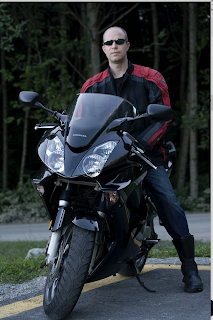Oscar Martens has been publishing in literary
journals since he was 17. A collection of his short fiction titled The
Girl with the Full Figure Is Your Daughter was published by Turnstone
Press in September 2002. One of his stories, originally published in
Queen’s Quarterly, was chosen for the 2008 Journey Prize Stories 20.
Both The Malahat Review and Prairie Fire have nominated my work for a
National Magazine Award.I'm thrilled to have him here for NO CALL TOO SMALL: STORIES. Thanks, Oscar!
Tell us about your book--and the situation in Canada now.
Tell us about your book--and the situation in Canada now.
The book's a collection of my best work over the past
eighteen years. These stories have been
nominated for the Western Magazine Awards, the National Magazine Awards, and
the Journey Prize. My first book was
released in 2002, in the shadow of 9/11.
This latest book launched on April 7, right in the middle of a
pandemic. I'm starting to develop a
complex. Do I dare release a third
book? Will I be upstaged by the Second
Coming? I realize it's bad form to be
whining about the fate of my book when other people are dying, but COME ON!
Canada has obediently accepted and adopted the official
narrative coming down from on high regarding the bug. A major casualty in this is my faith in
institutions such as the government at all levels and the mainstream
media. One example of this is our mask
policy. We were told masks didn't do any
good, yet they were somehow critical for medical staff. The obvious contradiction didn't seem to give
anyone pause. The position slowly
softened and is on its way to reversing, but the damage has been done. If the authorities wanted to save masks for
medical workers, they should have said so instead of claiming that masks
"weren't for healthy people" and "did not help."
The other interesting development is the rise of citizen
journalists fighting against establishment views. I still watch mainstream news for amusement,
but when I want useable information before anyone else has access to it, I
trust Chris Martenson, someone who has provided consistently good analysis and
insight for more than a decade. Michael
Burry has a few common sense suggestions, but you won't hear them openly
discussed, as they deviate from current consensus.
Canadians are often left in the dark when it comes to data,
presumably because the government thinks we can't handle the truth. The annoying non-answers and feel-good word
salad emanating from public officials is supposed to placate us. They were slow to enact travel restrictions
because they didn't want to upset other countries or appear racist. They won't tell us the location of various
COVID-19 clusters as that might stigmatize certain neighbourhoods. As late as
January 28, 2020, they were insisting there was "no evidence" that
asympomatic carriers spread the disease.
These developments are classically and disappointingly Canadian. Clear and decisive action is not always
pretty (as videos of lines of Chinese citizens bound together with rope show)
but tough measures are required to beat this thing, not the wokest of
"sunny ways."
What's obsessing you now beside the virus and why?
I'm addicted to an economics blog called Zerohedge. This doomy, cheeky news aggregator delivers
news hours, days, or years before it shows up in the mainstream media. Zerohedge clearly understands how addiction
works, posting so frequently that a new article is often served up by the time
you've finished reading the last one. Their prodigious production has
conditioned me to compulsively tap F5 until they provide another hit of the
good stuff. Records fall every day
now. Six sigma events pass by unnoticed
as we hit the highest highs, the lowest lows, and witness many things that have
never happened before. Will gold once
again demand respect as the only true money?
If 22 trillion in debt isn't too much, why not take on 220 trillion? Why not 220 quadrillion? Will direct Fed purchases of stocks and bonds
result in the Japanification of America?
What are the practical limits of central bank excesses? Sorry.
You asked.
What question didn't I ask that I should have?
What is it like to work with Michelle Halket at Central
Avenue Publishing?
I have often complained about the professional standards of
various literary journals and publishers.
I understand the inherent power imbalance between publishers and
writers, but some of this stuff borders on abuse. Months, even years for a form reply. Losing manuscripts and then blaming it on
Canada Post? Really?
The bleeding stopped when I made it to Central. Michelle is an excellent professional partner
with impressive instincts and relentless drive.
Central is her one-woman publishing machine, surviving and thriving
outside of the Canada Council grant system.
Best-selling poetry? Do those
words belong together? They do at
Central.
I'll give you three former Media Whore guests to put on your
watchlist.
The incredible Traci Skuce also has incredibly bad book
launch timing.
Brent van Staalduinen is putting out two books in the same
year. What a boss!
Wayne Jones co-wrote an exhaustive biography of the late
comedian Greg Giraldo and is now pivoting to a book about Samuel Johnson. Someone's got range.
Western Sky Books is a little bookstore tucked away in the
back corner of a strip mall in the Vancouver suburb of Port Coquitlam. They host a reading series called Words in
the Burbs. There's a railyard nearby,
and newcomers are often startled by the rumbling, but somehow it only adds to
the charm of the place.






















